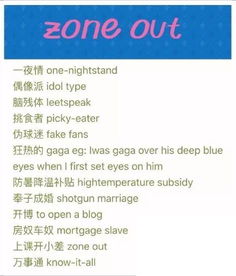
When it comes to language learning, one of the most essential skills is the ability to ask and respond to questions. In everyday conversations, a simple question like “These are what?” can lead to various responses and interactions. Understanding how to express and respond to such a question in English is crucial for effective communication. Let’s dive into the world of English expressions and explore different ways to handle this query.
In the realm of English language, the way we respond to a question can greatly impact the flow of conversation. The phrase “these are what” might seem straightforward, but there are numerous ways to approach it. As we explore the following sections, we’ll uncover the nuances and practical applications of these expressions.
In daily interactions, the curiosity about objects or situations often leads to the famous question. Here’s how you can start crafting your responses.
Understanding the Context
Before we dive into expressions, it’s important to understand that the context plays a significant role. For instance, if someone points at a group of objects, the response will differ from when they refer to a situation or concept. Let’s explore the expressions.
Expressing Curiosity: The Various Ways
When someone asks “These are what?”, they are often seeking clarification or expressing curiosity. Here are some authentic English expressions to respond:
-
Descriptive Response:
Start with a simple, “These are [object]. For example, “These are books from my literature class.” This direct approach provides immediate clarity and is often the most straightforward. -
Elaborative Response:
If you want to add more detail, you can say, “These are antique vases that I collected during my travels in Asia.” This not only identifies the objects but also adds a layer of personal history. -
Inquisitive Response:
Sometimes, you might want to turn the question back to engage the person. “These? They are part of a collection. Have you seen these before?” This keeps the conversation flowing.
以下 are more expressions to consider:
4. Casual Response:
“In plain English, these are just some old stuff I found in the attic.”
5. Humorous Response:
“These? Oh, they are my future million-dollar inventions, or at least that’s what I tell myself.”
6. Technical Response:
“These are components for a new software we’re developing. Quite intricate, actually.”
7. Educational Response:
“These are artifacts from ancient Egypt. They offer a fascinating glimpse into their culture.”
The Art of Conversation
Each of these responses serves a different purpose and can shape the conversation in various ways. For instance, the descriptive response is perfect for a quick exchange, while the elaborative response can lead to a deeper discussion about the items or the story behind them.
It’s also important to note that body language and tone play a significant role. If you respond with a casual tone and a smile, it can change the entire dynamics of the interaction, making it more relaxed and friendly.
Practical Applications
In a professional setting, such as a meeting or a presentation, the technical or educational response might be more appropriate. It shows your knowledge and can even impress the audience with your expertise.
In social settings, the humorous or inquisitive response can be a great icebreaker, allowing you to connect with others on a more personal level.
Final Thoughts on Mastering the Art
As you navigate through different social and professional scenarios, mastering the art of responding to “These are what?” can make a significant difference. It’s not just about providing information; it’s about engaging with others, sharing stories, and building connections.
By understanding the context and choosing the right expression, you can turn a simple question into a meaningful exchange. Whether you’re describing a valuable artifact or joking about old attic finds, the way you respond can leave a lasting impression and enhance your communication skills.
In the journey of learning English, it’s these small nuances that can make a big difference. As you practice and incorporate these expressions into your conversations, you’ll find that your interactions become more fluid and enjoyable, enriching both your personal and professional life. Remember, effective communication is not just about speaking the language; it’s about understanding the subtleties and using them to your advantage.